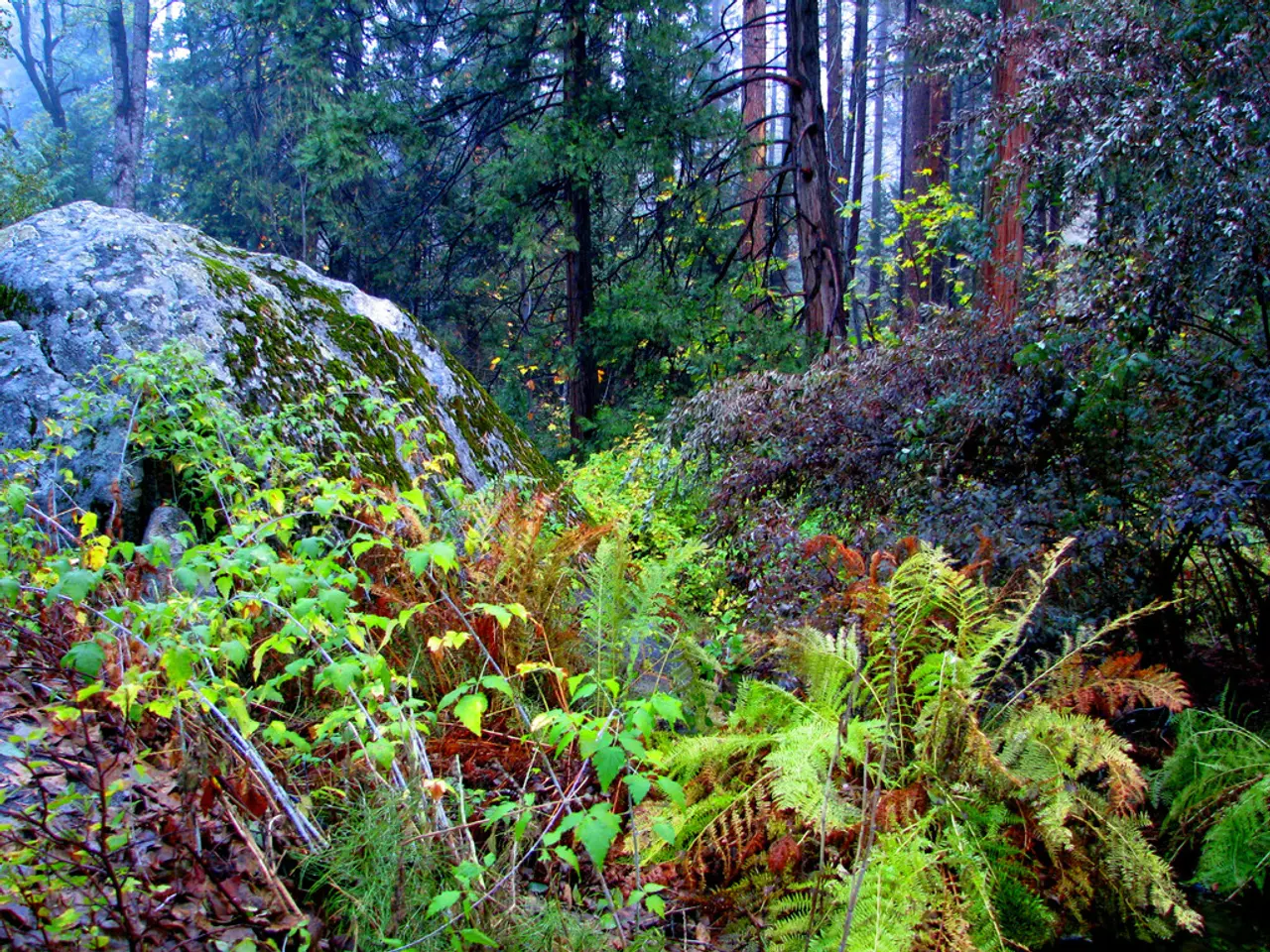Ancient Discovery: 300 Million Years Ago, in the Town of Joggins, Fossil Remains Unearthed
A Remarkable Discovery at Joggins Fossil Cliffs
In the picturesque town of Joggins, Nova Scotia, history and nature collide to create a unique blend of geological wonders and industrial past. The town is renowned for its fossil-rich cliffs, which date back approximately 300 million years and offer an unparalleled window into life during the Carboniferous period.
Joggins was once a bustling coal mining community, with 83 mines, a dock for loading ships, and a railway. However, the coal industry declined after World War II due to the quality of the coal, difficulty in transporting it elsewhere, and the rise of oil. The last mine in Joggins closed in 1961, and the miners went to work in the Ontario automobile factories.
Despite the decline of the coal industry, Joggins continues to attract visitors from around the world. The Joggins Fossil Cliffs were added to the UNESCO World Heritage List in 2008 and are part of the Cliffs of Fundy UNESCO Global Geopark.
Recently, a visitor named Donna Floyd, from Alexandria, Ontario, made a significant discovery. While exploring the beach at the Joggins Fossil Centre, she found a fossilized shrimp head. The shrimp fossil, a pygocephalus with a three-centimeter diameter, was collected by Dana Brown, an interpretive guide at the Joggins Fossil Centre, for educational and research purposes.
Dana, whose father managed to stay in Joggins by becoming a fisherman after the last mine closed, is no stranger to the region's treasures. He shared Donna's discovery on social media, bringing attention to the ongoing scientific discoveries at the site.
Visitors to the Joggins Fossil Centre cannot keep the fossils they find, but they can take photos and learn more about the site in a small exhibition. The Centre is located in a small village that has seen better days, yet it continues to draw tourists who search for fossils on the beach.
The area was part of the supercontinent of Pangea when the equator passed through it. Today, Fundy Bay, with its highest tides in the world, continues to reveal fossils that have been hidden for over 300 million years. Each tide offers a new opportunity for discovery, making Joggins a focal point for scientific discovery and cultural tourism.
- Donna Floyd, a visitor from Ontario, recently made a remarkable discovery at the Joggins Fossil Centre, which specializes in environmental science and climate-change related studies, by finding a fossilized shrimp head, contributing to ongoing scientific research.
- The lifestyle of Joggins residents has shifted over the years, from coal mining to fishing, but the town continues to be a significant travel destination, showcasing therench history of the region through its unique fossil-rich cliffs and the UNESCO World Heritage Site, the Joggins Fossil Cliffs.
- Exploring the beach at the Joggins Fossil Centre offers a captivating blend of science, culture, and travel, allowing visitors to experience the environmental-science wonders that date back to the Carboniferous period, while contributing to the town's economy and keeping its heritage alive.




